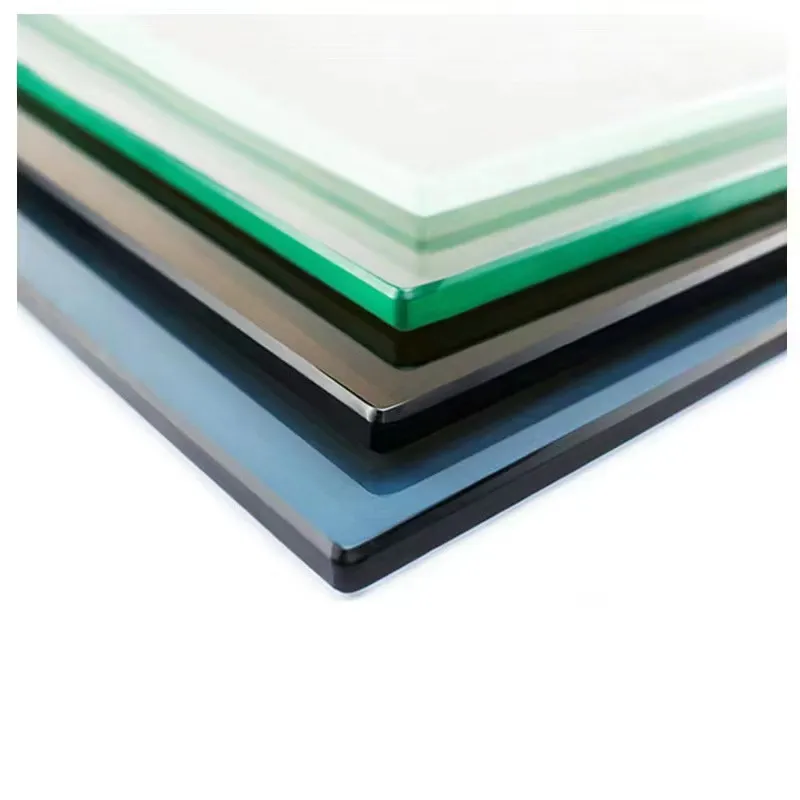The Evolution and Importance of Architectural Glass Manufacturers
In the world of modern construction and design, architectural glass has become an essential element, enabling not only aesthetic appeal but also functionality and energy efficiency. Architectural glass manufacturers play a critical role in shaping our built environment, delivering products that enhance the beauty, performance, and sustainability of buildings.
History and Evolution
The use of glass in architecture dates back thousands of years, with early civilizations utilizing it mostly for decorative purposes. However, the industrial revolution brought about significant advancements in glass manufacturing processes. By the mid-20th century, innovations such as tempered glass, laminated glass, and insulated glazing units (IGUs) revolutionized how glass could be used in architecture. Today, architectural glass manufacturers offer a diverse range of products, including flat glass, curved glass, ultra-clear glass, and even smart glass that changes properties with the touch of a button.
Types of Architectural Glass
Architectural glass can be categorized into several types, each serving unique functions
1. Tempered Glass Often used for doors and windows, tempered glass is heat-treated to enhance strength and safety. It shatters into small, blunt pieces rather than sharp shards, reducing the risk of injury.
2. Laminated Glass This type consists of two or more layers of glass bonded together with an interlayer, usually made of polyvinyl butyral (PVB). Laminated glass provides enhanced security, UV protection, and sound insulation, making it ideal for high-rise buildings and commercial spaces.
3. Insulated Glass Units (IGUs) These are used predominantly in window assemblies, providing excellent thermal performance. IGUs consist of two or more panes of glass separated by an inert gas, such as argon, that prevents heat transfer, thus improving energy efficiency.
architectural glass manufacturer
4. Smart Glass This cutting-edge technology allows glass to change its opacity or color in response to external stimuli such as light or heat. Smart glass is increasingly used in modern architecture to optimize natural light and improve energy efficiency.
Sustainability and Energy Efficiency
As concerns about climate change and energy consumption grow, architectural glass manufacturers are focusing on sustainability. Many are adopting environmentally friendly practices throughout their production processes, such as using recycled materials and reducing waste. Moreover, advances in glass technology have led to the development of energy-efficient glazing solutions that minimize heat loss and improve insulation.
Low-emissivity (Low-E) coatings are among the most significant innovations in this regard. These invisible coatings reflect infrared energy while allowing visible light to pass through, resulting in reduced heating and cooling costs for buildings. Architectural glass manufacturers are also investing in research and development to create even more efficient products that meet stringent building codes and sustainability certifications.
The Role of Glass Manufacturers in Design and Aesthetics
Architectural glass manufacturers are not just suppliers; they are critical collaborators in the design process. Architects and designers increasingly seek glass solutions that offer unique visual impacts, enabling them to create stunning facades and inviting interiors. The versatility of glass allows for a wide range of design possibilities, from sleek, modern aesthetics to intricate, traditional patterns.
Additionally, advancements in digital printing technology have enabled manufacturers to produce customized glass panels that can feature logos, images, or intricate designs. This personalization adds character to buildings, allowing them to resonate with their surroundings.
Conclusion
Architectural glass manufacturers are at the forefront of innovation and sustainability in the building industry. As we move towards a future that prioritizes eco-friendly design and efficient energy use, these manufacturers will continue to push the boundaries of what is possible with glass. Their contributions are vital not only in enhancing the aesthetic appeal of buildings but also in improving their overall performance and sustainability. As the demand for modern, efficient, and aesthetically pleasing designs grows, the role of architectural glass manufacturers will undoubtedly remain pivotal in shaping the skylines of tomorrow.
 Afrikaans
Afrikaans  Albanian
Albanian  Amharic
Amharic  Arabic
Arabic  Armenian
Armenian  Azerbaijani
Azerbaijani  Basque
Basque  Belarusian
Belarusian  Bengali
Bengali  Bosnian
Bosnian  Bulgarian
Bulgarian  Catalan
Catalan  Cebuano
Cebuano  Corsican
Corsican  Croatian
Croatian  Czech
Czech  Danish
Danish  Dutch
Dutch  English
English  Esperanto
Esperanto  Estonian
Estonian  Finnish
Finnish  French
French  Frisian
Frisian  Galician
Galician  Georgian
Georgian  German
German  Greek
Greek  Gujarati
Gujarati  Haitian Creole
Haitian Creole  hausa
hausa  hawaiian
hawaiian  Hebrew
Hebrew  Hindi
Hindi  Miao
Miao  Hungarian
Hungarian  Icelandic
Icelandic  igbo
igbo  Indonesian
Indonesian  irish
irish  Italian
Italian  Japanese
Japanese  Javanese
Javanese  Kannada
Kannada  kazakh
kazakh  Khmer
Khmer  Rwandese
Rwandese  Korean
Korean  Kurdish
Kurdish  Kyrgyz
Kyrgyz  Lao
Lao  Latin
Latin  Latvian
Latvian  Lithuanian
Lithuanian  Luxembourgish
Luxembourgish  Macedonian
Macedonian  Malgashi
Malgashi  Malay
Malay  Malayalam
Malayalam  Maltese
Maltese  Maori
Maori  Marathi
Marathi  Mongolian
Mongolian  Myanmar
Myanmar  Nepali
Nepali  Norwegian
Norwegian  Norwegian
Norwegian  Occitan
Occitan  Pashto
Pashto  Persian
Persian  Polish
Polish  Portuguese
Portuguese  Punjabi
Punjabi  Romanian
Romanian  Russian
Russian  Samoan
Samoan  Scottish Gaelic
Scottish Gaelic  Serbian
Serbian  Sesotho
Sesotho  Shona
Shona  Sindhi
Sindhi  Sinhala
Sinhala  Slovak
Slovak  Slovenian
Slovenian  Somali
Somali  Spanish
Spanish  Sundanese
Sundanese  Swahili
Swahili  Swedish
Swedish  Tagalog
Tagalog  Tajik
Tajik  Tamil
Tamil  Tatar
Tatar  Telugu
Telugu  Thai
Thai  Turkish
Turkish  Turkmen
Turkmen  Ukrainian
Ukrainian  Urdu
Urdu  Uighur
Uighur  Uzbek
Uzbek  Vietnamese
Vietnamese  Welsh
Welsh  Bantu
Bantu  Yiddish
Yiddish  Yoruba
Yoruba  Zulu
Zulu 

